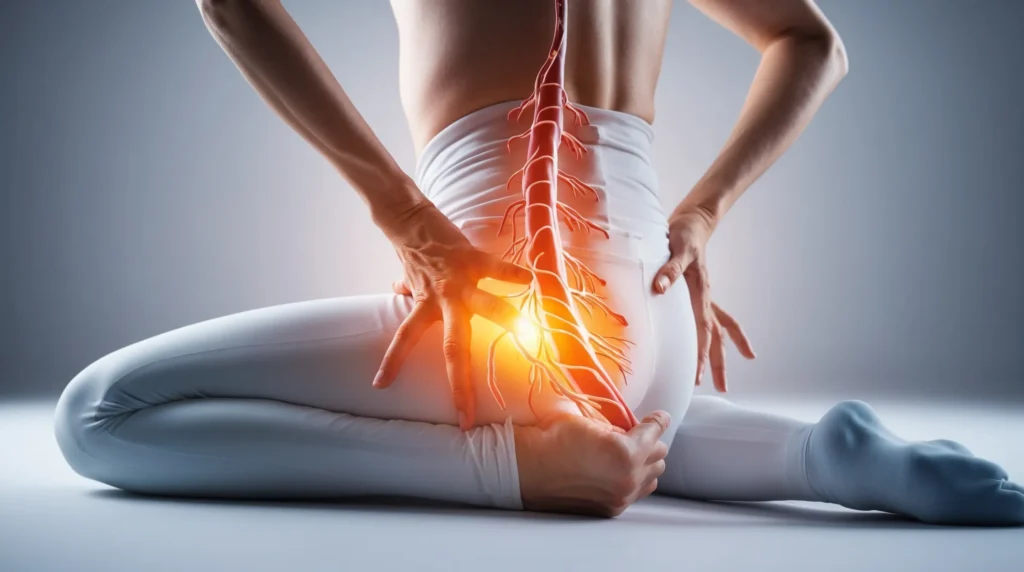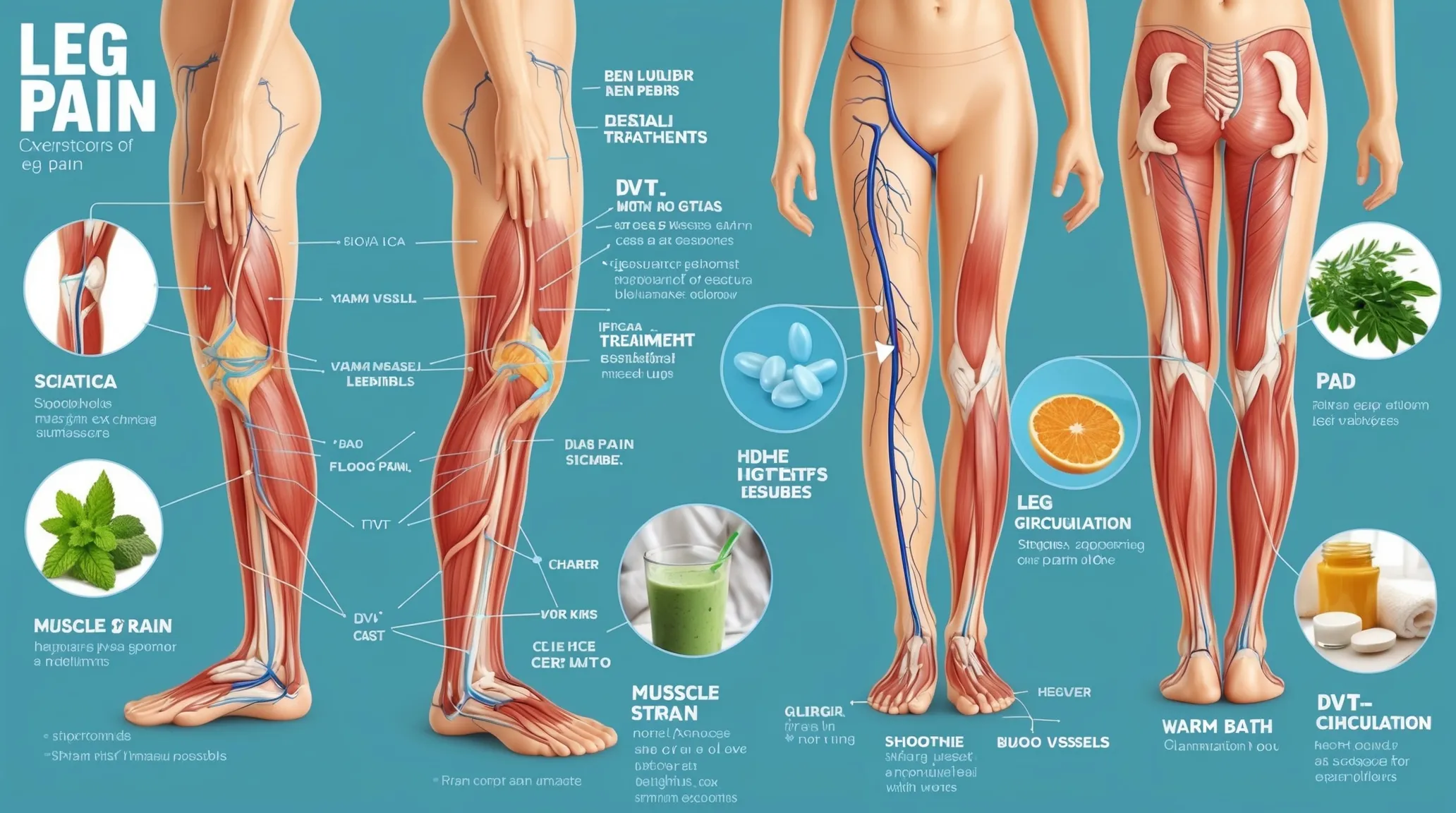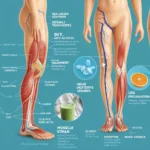What to Know About Leg Pain: Causes, Symptoms, and Home Treatments
Leg pain is something many of us experience at some point, but its causes can vary widely, ranging from simple muscle strains to more complex conditions like nerve damage or circulatory issues. I’ve had my share of leg pain from overdoing it at the gym to sitting too long during a long-haul flight and through those experiences, I’ve learned that understanding the source of the pain is crucial for treating it effectively. In this post, we’ll dive into common causes of leg pain, their symptoms, and some home remedies you can try for relief.
1. Muscle Strain and Soreness: A Common Culprit

If you’ve ever woken up the day after an intense workout feeling like your legs are made of lead, you’re not alone. Muscle strain is one of the most common causes of leg pain, and it’s often a result of overuse, especially if you’ve pushed your body beyond its limits.
Personal anecdote: I remember the first time I signed up for a spin class. The adrenaline rush was incredible, but the next morning, I could barely walk up the stairs. My legs felt sore, stiff, and tight from the exertion. A warm Epsom salt bath and some gentle stretching did wonders for relieving the soreness.
Symptoms:
- Dull, aching pain in the muscles
- Tenderness and stiffness, especially after exercise
- Difficulty moving the leg comfortably
Home Treatment:
- Rest: Take it easy for a few days to allow your muscles to recover.
- Magnesium-Rich Smoothie: Try a smoothie made with spinach (high in magnesium) and bananas (rich in potassium) to help your muscles relax. Recipe: Blend 1 banana, 1 cup spinach, 1 tablespoon chia seeds, and 1 cup almond milk for a muscle-soothing smoothie.
2. Sciatica: That Shooting Pain Down Your Leg

Sciatica is a different type of pain altogether. It’s often described as a sharp, shooting pain that radiates from the lower back, through the buttocks, and down one leg. This pain occurs when the sciatic nerve gets compressed, usually by a herniated disc or a muscle spasm.
Relatable scenario: My sister, who spends hours sitting at her desk as a graphic designer, started experiencing sciatica after a few months of working from home without a proper office setup. The pain would shoot down her leg whenever she sat for too long. She found relief with a combination of yoga stretches and anti-inflammatory foods.
Symptoms:
- Sharp, shooting pain that starts in the lower back and radiates down the leg
- Numbness or tingling
- Pain that worsens after sitting for long periods
Home Treatment:
- Gentle stretching: Yoga poses like the pigeon pose can help ease the pressure on the sciatic nerve.
- Anti-Inflammatory Turmeric Tea: Mix 1 teaspoon of turmeric powder with 1/2 teaspoon of ginger powder in warm coconut milk. Drink daily to reduce inflammation around the nerve.
3. Deep Vein Thrombosis (DVT): A Serious Condition

Sometimes, leg pain can indicate something more serious, like Deep Vein Thrombosis (DVT), which is a blood clot in the veins of your leg. DVT can be life-threatening if left untreated, as the clot can break free and travel to the lungs, causing a pulmonary embolism.
Personal anecdote: I once met a fellow traveler who developed DVT after a long flight. He had dismissed the initial swelling and discomfort in his leg as normal post-travel fatigue. It wasn’t until he felt a warm, painful sensation that he sought medical attention and discovered he had DVT.
Symptoms:
- Swelling in one leg
- Warmth and redness
- Pain that worsens when standing or walking
Home Treatment:
While medical intervention is crucial for DVT, boosting circulation at home is beneficial.
- Beetroot and Citrus Salad: Beetroot helps improve circulation, while citrus provides vitamin C for healthy blood vessels. Recipe: Boil and slice 1 medium beetroot, mix with slices of orange, add a handful of arugula, and drizzle with olive oil.
4. Peripheral Artery Disease (PAD): When Blood Flow Is Limited
Peripheral Artery Disease (PAD) occurs when your arteries become narrowed, reducing blood flow to your legs. This often leads to cramping and pain, particularly during physical activities like walking or climbing stairs.
Relatable scenario: A family member of mine, who’s been a smoker for years, started experiencing leg cramps after walking just short distances. It took a while to connect the dots, but eventually, a doctor diagnosed him with PAD. Since then, he’s incorporated more nitrate-rich foods into his diet to support better circulation.
Symptoms:
- Cramping or pain during activity that eases with rest
- Numbness or weakness in the legs
- Cold feet or legs
Home Treatment:
- Pomegranate and Spinach Smoothie: Pomegranates are great for improving circulation, and spinach is packed with nitrates that help relax blood vessels. Recipe: Blend 1/2 cup pomegranate seeds, a handful of spinach, and 1/2 cup of coconut water for a circulation-boosting drink.
5. Restless Leg Syndrome (RLS): The Urge to Move
Restless Leg Syndrome (RLS) is a neurological disorder that causes an irresistible urge to move your legs, often accompanied by strange sensations like tingling or itching. RLS can be disruptive, especially at night when it prevents restful sleep.
Personal anecdote: I used to think my fidgety legs at night were just a result of being overtired. But when it started keeping me awake, I did some research and realized it was RLS. I found relief by adding more magnesium-rich foods to my diet and making sure I stretched before bed.
Symptoms:
- Uncomfortable sensations in the legs
- Strong urge to move your legs, especially at night
- Temporary relief from moving
- Iron-Rich Lentil Soup: Lentils are a great source of iron, which can help alleviate RLS symptoms. Recipe: Cook 1 cup of red lentils with a diced tomato and carrot. Add 1 teaspoon turmeric for an anti-inflammatory boost.
Conclusion: Finding Relief from Leg Pain at Home
Leg pain can range from mildly annoying to seriously debilitating, but understanding its cause is the first step toward effective treatment. Whether it’s a simple muscle strain or something more complex like sciatica or DVT, there are home remedies you can try to manage and relieve your symptoms. However, always listen to your body if your pain persists or worsens, it’s crucial to seek professional medical advice. Taking care of your legs not only helps with mobility but also improves your overall health and well-being.
Remember, leg pain isn’t something to ignore, especially if it disrupts your daily life. With the right knowledge and some simple home treatments, you can keep your legs healthy and strong!
Hi there! I’m content writer and blogger. With over two years of experience, I’ve shared my passion for writing across various platforms. I firmly believe in the transformative power of words and look forward to sharing this journey with you. Enjoy my work!










